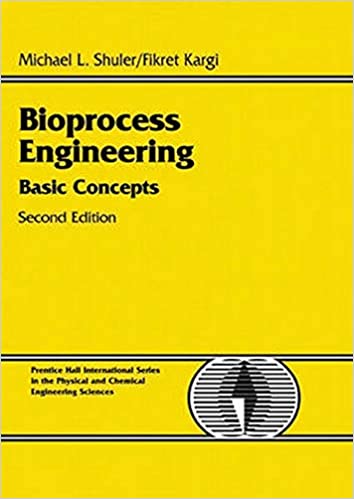
Bioprocess Engineering 2nd Edition by Fikret Kargi,Michael Shuler
Edition 2ISBN: 9780130819086
Bioprocess Engineering 2nd Edition by Fikret Kargi,Michael Shuler
Edition 2ISBN: 9780130819086 Exercise 12
A solute protein is to be separated from a liquid phase in a chromatographic column. The ad-
sorption isotherm is given by the following equation: where
where  is the solute concentration in solid phase (mg solute/mg adsorbent) and
is the solute concentration in solid phase (mg solute/mg adsorbent) and  is the
is the
liquid phase concentration of solute (mg solute/ml liquid). Use the following information:
a. For V = 400 ml and X = 25 cm determine the equilibrium solute concentrations in liquid
and solid phases.
b. Determine the ratio of travel distances of solute to solvent,

sorption isotherm is given by the following equation:
 where
where  is the solute concentration in solid phase (mg solute/mg adsorbent) and
is the solute concentration in solid phase (mg solute/mg adsorbent) and  is the
is theliquid phase concentration of solute (mg solute/ml liquid). Use the following information:

a. For V = 400 ml and X = 25 cm determine the equilibrium solute concentrations in liquid
and solid phases.
b. Determine the ratio of travel distances of solute to solvent,

Explanation
A solute protein is to be separated from...
Bioprocess Engineering 2nd Edition by Fikret Kargi,Michael Shuler
Why don’t you like this exercise?
Other Minimum 8 character and maximum 255 character
Character 255


